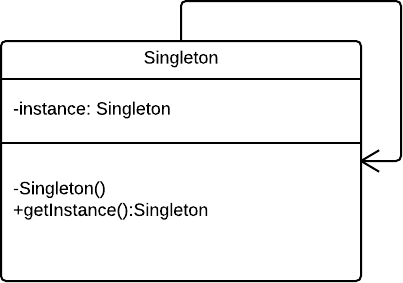Singleton pattern is to have only one instance for a class. One of the most important reason to use singleton pattern is to save memory. For example, in a system there should be only one window manager. Singletons is good at providing a centralized management system for internal or external resources.
Description
The class can create no more than one instace. All the programs want to access the instance will use the same reference.
Intent
- No more than one instance should be created globally,
- Provide a global access point.
UML

Implementation
Java
public class Singleton
{
private static Singleton instance;
private Singleton(){}
// synchronized keyword is important since
// it can help avoid multiple threads create different instance at same time
public static synchronized Singleton getInstance()
{
if(instance = null)
{
instance = new Singleton();
}
return instance;
}
} The implementations above in Java should be robust for any situtation. However, synnchronize a function is expensive.
Go
example from stackoverflow
package singleton
import "sync"
type singleton struct {}
var instance *singleton
var once sync.Once
func New() *singleton {
if instantiated == nil {
once.Do(func() {
instantiated = new(single)
})
}
return instantiated
}The above code is an implementation of Singleton Pattern in Go. However, since Go is not a class-based OO language, most of the classic OO design patterns are awkward to translate into Go. Therefore, Singleton pattern is less useful for Go compared with Java.